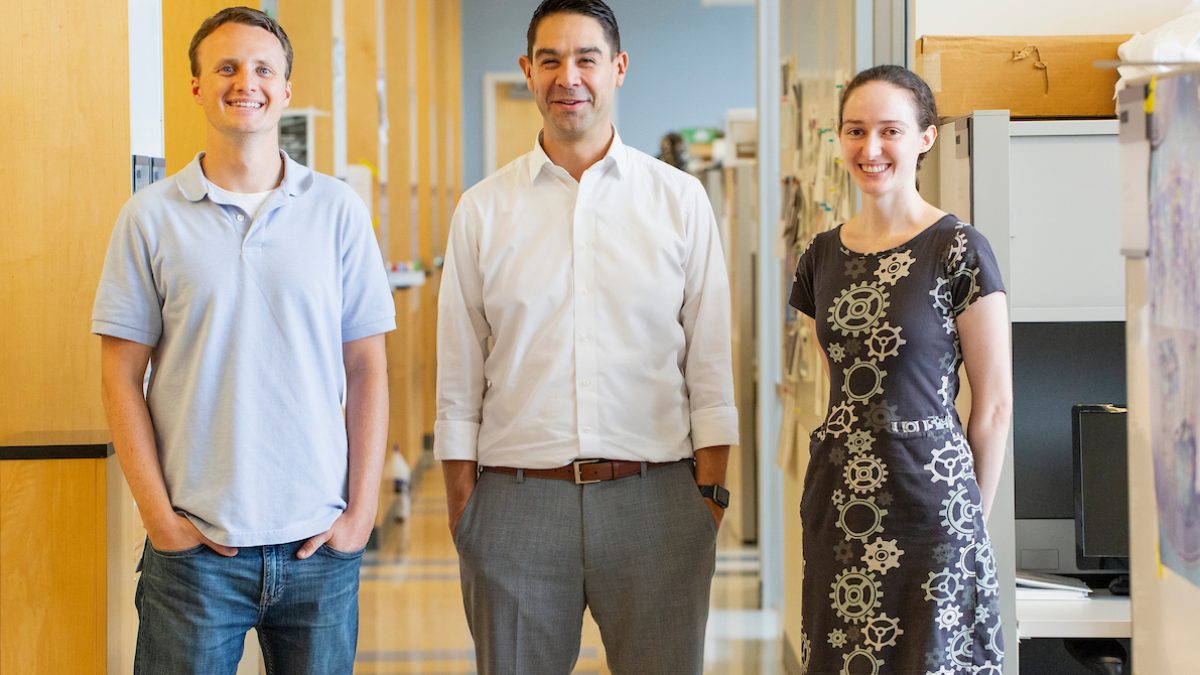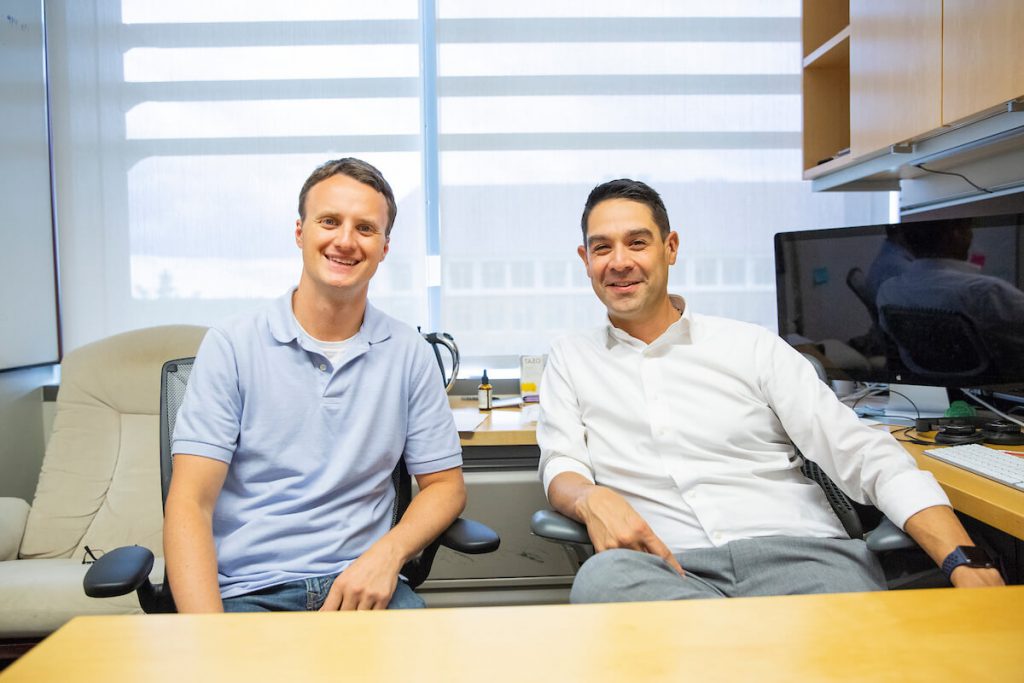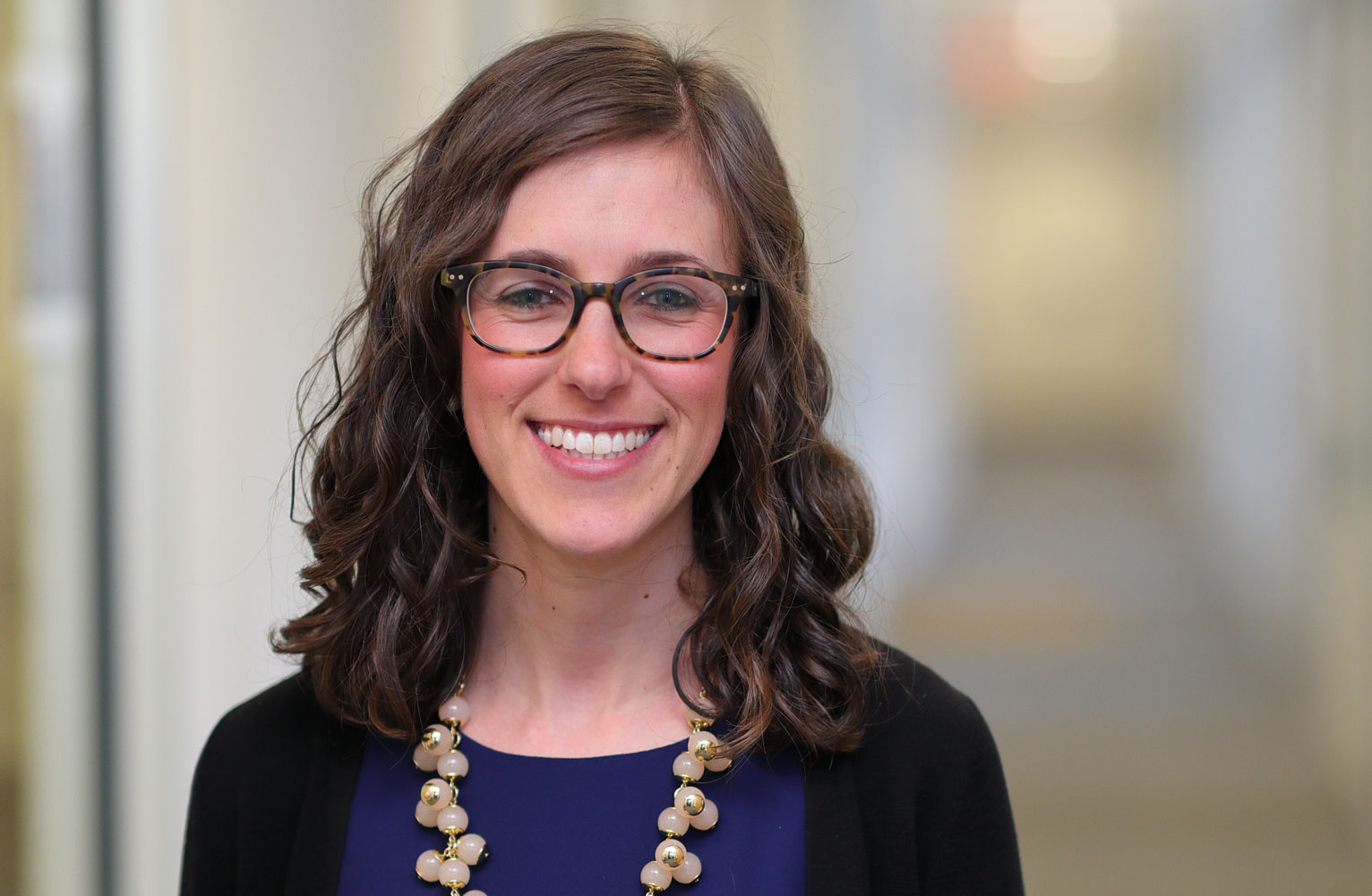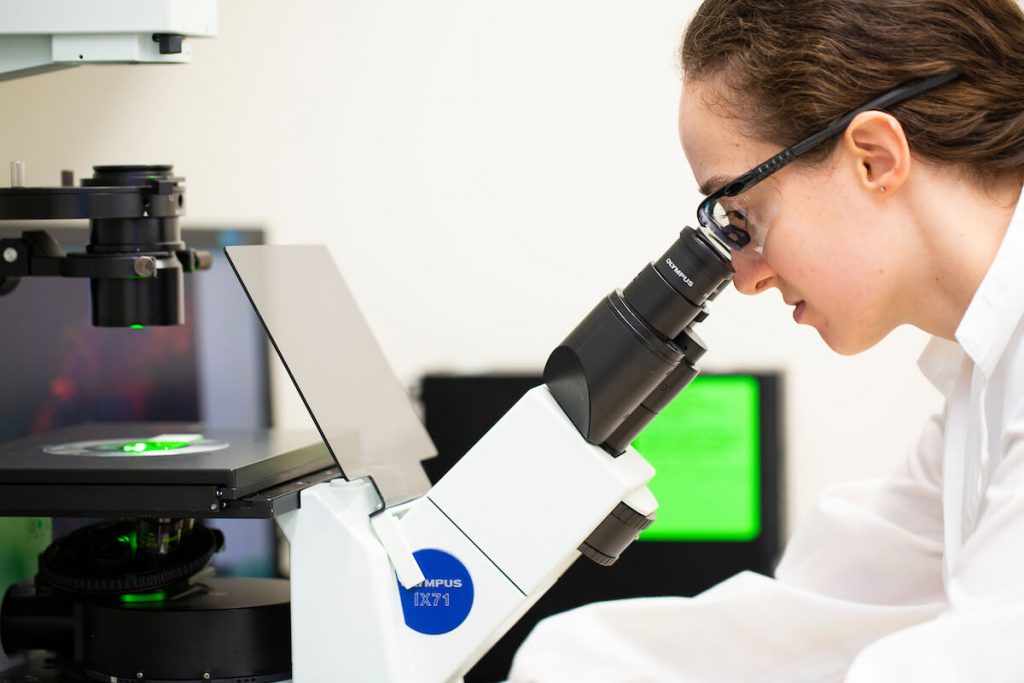Satterlee grew up in a suburb of Kansas City, Kansas, a typical kid who participated in theatre and played football. After high school, he went to nearby Kansas State University as a chemical engineering major.
In 2007, his sophomore year of college, he developed headaches and nausea, symptoms that don’t traditionally cause alarm. Vertigo, vomiting and fainting came next.
“It turned out to be hydrocephalus,” said Satterlee. “Cerebrospinal fluid washes over the brain and drains into ventricles. But, there was something blocking one of the ducts, so it couldn’t drain, and the pressure in my brain started to go up.”
After seeing a mass on a CT scan, the first doctor thought it was a cyst. A shunt was inserted into his skull to help drain the fluid, and Satterlee went on to finish his fall semester. As his parents sought a second opinion, they learned about Mitchel Berger, M.D., a neurosurgeon at the University of California in San Francisco.
“Dr. Berger was the guy you wanted. He took a look at my scans and said, ‘get out here.’”
Satterlee had a germ cell tumor in his brain, something more commonly seen in pediatric cancer or testicular cancer. His condition was incredibly rare, and there was little research on how to treat it. Satterlee was a full-time sophomore, simply taking a lighter load to accommodate treatment. For one of his research projects at school, he explored the best way to treat germ-cell cancer in the brain.
“The first cancer research I ever did was trying to find a cure for my own brain cancer.”
Theatre was also part of Mercer-Smith’s high-school experience two states west in New Mexico. In 2007, she was a 15-year-old high school student and a talented alto who found herself suddenly singing baritone. She developed tough-to-treat acne and a mustache. Then, her period stopped. Fifteen is a tough time for teenage girls, Mercer-Smith said, and she was no exception. She tried to rationalize the symptoms: allergies had made her hoarse. Bad skin was normal for a teenager.
“Talking became scary because I didn’t know what would come out. People were joking with me that I was turning into a boy. I went to see a dermatologist who prescribed retinoids, and my skin started flaking off, but my acne didn’t get any better. I didn’t know it, but this was because of spikes in testosterone.”
Mercer-Smith knew a regular menstrual cycle was an indicator of health, but her period would vanish for months. Her mother took her to her pediatrician.
“My pediatrician did a lab test and said, you know your estrogen is perfectly fine, but your testosterone is really high. That was really upsetting. The scary part was not knowing why any of this was happening to me.”
Mercer-Smith was referred to a gynecologic oncologist who found masses on her ovaries, which were first deemed benign. The pathology came back as cancer. Because the cancer was detected so early, Mercer-Smith was able to avoid both radiation and chemotherapy with the removal of one ovary and medication management to suppress the remaining one.
“When you’re a teenage girl with cancer, your brain still works like a teenager. I was walking into the hospital on the day of my surgery, and I passed by a boy my age in the lobby. I went in the bathroom and looked in the mirror, thinking about how he probably thought I looked awkward or ugly. In that moment, the possibility of having cancer just paled in comparison to feeling awkward about some stranger boy I didn’t know.”
story continues below




